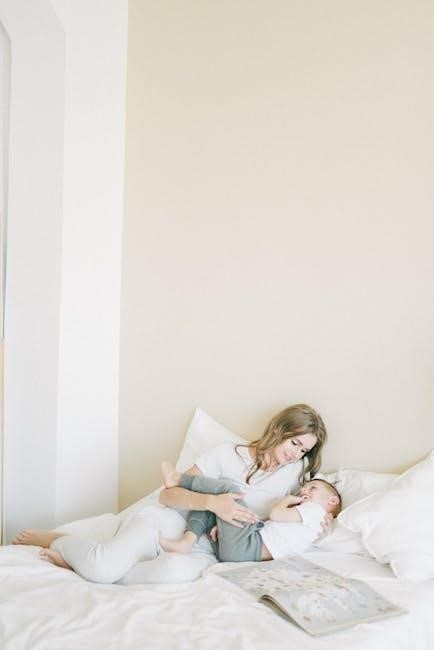Welcome to the Baby Sleep Bag TOG Guide, your ultimate resource for understanding Thermal Overall Grade (TOG) ratings. This guide helps parents make informed decisions about dressing their baby safely and comfortably for sleep, avoiding overheating risks like SIDS. Discover how TOG ratings work, seasonal considerations, and layering tips to ensure your baby sleeps soundly year-round.
1.1 What is a TOG Rating?
A TOG (Thermal Overall Grade) rating measures the warmth of a baby sleep bag, indicating its thermal resistance. It helps parents choose the right sleep bag for their baby’s comfort and safety. Ranging from 0.5 to 4.0, lower TOG ratings are lighter for warmer weather, while higher ratings provide more insulation for colder conditions. Understanding TOG ensures proper layering and avoids overheating, which is crucial for preventing SIDS (Sudden Infant Death Syndrome).
1.2 Importance of Understanding TOG for Baby Sleep Safety
Understanding TOG ratings is crucial for ensuring baby sleep safety. It helps prevent overheating, a key risk factor for SIDS (Sudden Infant Death Syndrome). Proper TOG use ensures comfort and avoids over-layering or under-layering, promoting safe sleep environments. Knowledge of TOG ratings is essential for parents to make informed decisions, ensuring their baby sleeps safely and comfortably year-round.
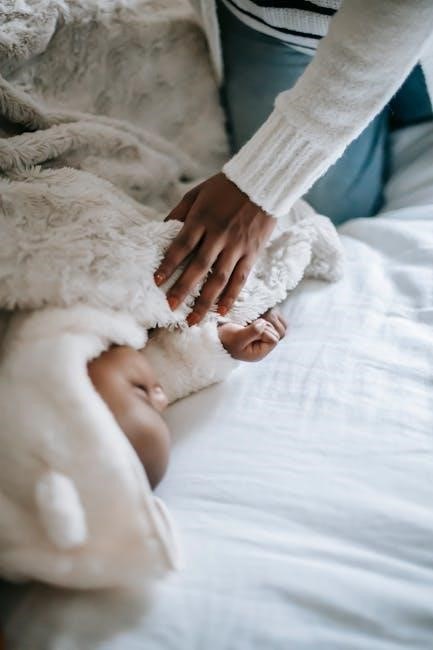
1.3 Purpose of the Guide
This guide aims to educate parents on selecting appropriate TOG-rated sleep bags for their baby’s safety and comfort. It provides clear, evidence-based information to help navigate seasonal changes, layering, and room temperature considerations. By understanding TOG ratings, parents can create a safe sleep environment, reducing risks like overheating and ensuring their baby sleeps soundly. This comprehensive resource empowers parents to make informed decisions tailored to their baby’s unique needs and external conditions.

How TOG Ratings Work
TOG ratings measure a garment’s thermal resistance, indicating how much warmth it traps. Higher TOG means more warmth, while lower TOG suits warmer environments, ensuring comfort and safety.
2.1 Definition of Thermal Overall Grade (TOG)
The Thermal Overall Grade (TOG) measures a garment’s thermal resistance, indicating how much warmth it traps. It is a standardized scale to assess a fabric’s ability to retain heat, ensuring safety and comfort for babies. TOG ratings typically range from 0.5 to 4.0, with higher values offering greater warmth. This measurement helps parents choose appropriate sleepwear for varying temperatures, promoting a safe sleep environment and preventing overheating or chilling.
2.2 Standard Measurement for Garment Warmth
The TOG rating is measured using a standardized test that evaluates a garment’s ability to trap warm air. fabrics are tested in controlled laboratory conditions to determine their thermal resistance. The measurement assesses how well a material retains heat, ensuring accuracy and consistency. This process helps parents understand the warmth level of sleep bags, making it easier to choose appropriate garments for different environments and seasons, promoting safe and comfortable sleep for babies.
2.3 Factors Influencing TOG Requirements
Several factors influence the appropriate TOG rating for a baby sleep bag, including room temperature, the baby’s age, weight, and health conditions. Seasonal changes, the baby’s activity level during sleep, and the use of additional bedding also play a role. Premature or low-birth-weight babies may require different considerations. Understanding these factors helps parents select the right TOG to ensure their baby stays comfortable and safe, balancing warmth and breathability for optimal sleep conditions year-round.
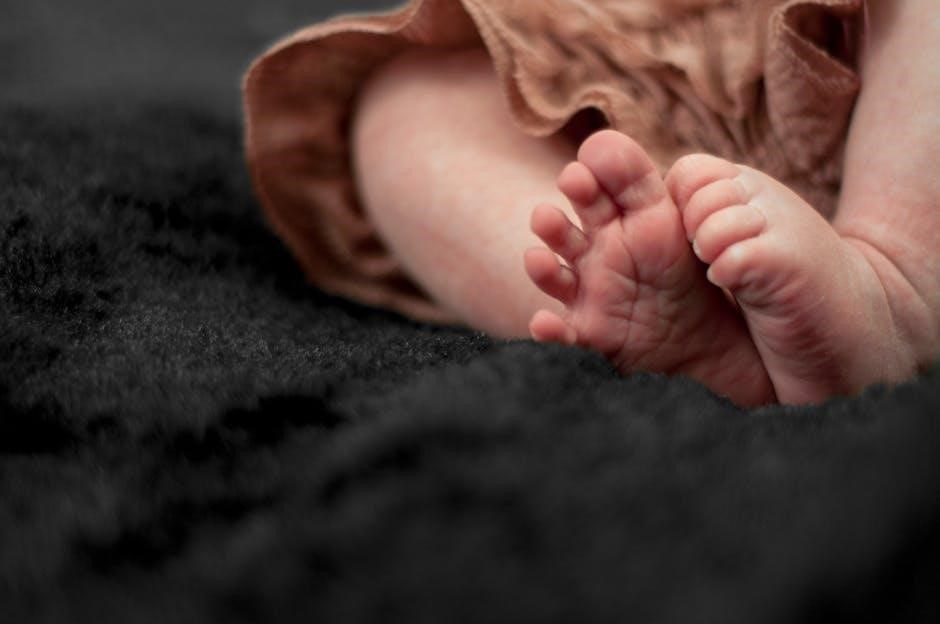
Seasonal Considerations for Baby Sleep Bags
Seasonal changes influence baby sleep bag TOG ratings, ensuring comfort across varying temperatures. Winter requires higher TOG, while spring and summer need lighter options, adjusting for room conditions and baby’s needs. Transitioning between seasons may involve switching TOG levels to maintain safety and comfort, ensuring baby stays cozy without overheating in different climates and environments.
3.1 Winter Sleep Bag TOG Ratings
In colder months, baby sleep bags with higher TOG ratings (2.5 to 3.5) are recommended to keep babies warm and cozy. These ratings ensure adequate insulation without risking overheating. For extremely cold climates or drafty rooms, a 4.0 TOG sleep bag may be necessary. Always check the room temperature and baby’s comfort, as winter TOG ratings must balance warmth and safety to prevent SIDS risks. Adjustments may be needed based on individual needs and environmental factors.
3.2 Spring and Summer Sleep Bag TOG Ratings
For spring and summer, lighter TOG ratings (0.5 to 1.5) are recommended to ensure babies stay comfortable without overheating. These lower ratings are designed to keep babies cool in warmer temperatures while maintaining breathability. Parents should monitor room temperature and adjust layers accordingly. Lighter fabrics and proper ventilation are key to preventing overheating risks, which can be dangerous for infants. This range helps maintain a safe and comfortable sleeping environment during warmer months.
3.3 Transitioning Between Seasons
Transitioning between seasons requires adjusting your baby’s sleep bag TOG rating to maintain comfort and safety. As temperatures rise in spring, switch to lighter TOG-rated bags (0.5-1.5). In autumn, gradually introduce warmer TOG ratings (2.5-3.5) to accommodate cooler nights. Always monitor room temperature and adjust layers accordingly to prevent overheating or chilling. This approach ensures a smooth adaptation to changing weather conditions while keeping your baby comfortable year-round.
Layering Clothing Under Sleep Bags
Layering clothing under sleep bags ensures comfort and safety. Choose breathable fabrics and lightweight materials, adjusting based on the sleep bag’s TOG rating and room temperature.
4.1 Choosing the Right Base Layers
Base layers are essential for regulating body temperature under sleep bags. Opt for soft, breathable fabrics like cotton or bamboo, which allow moisture to evaporate. Lightweight onesies or sleepwear are ideal for warmer environments, while thermal or merino wool layers suit colder settings. Ensure the base layer fits snugly but not too tight, avoiding bulk that could cause discomfort. Match the layer’s thickness to the sleep bag’s TOG rating to maintain a safe and cozy environment for your baby.
4.2 Adjusting Layers Based on Room Temperature
Room temperature plays a key role in determining how many layers your baby needs. For cooler rooms (below 68°F), add a lightweight layer under the sleep bag. In warmer rooms (above 72°F), a single base layer may suffice. Always check your baby’s comfort: if they’re too hot, remove a layer, and if they’re chilly, add one. This balance ensures optimal comfort and safety, preventing overheating while maintaining warmth.
4.3 Importance of Breathable Fabrics
Breathable fabrics are essential for maintaining a safe and comfortable sleep environment. They allow moisture to evaporate, preventing overheating and reducing the risk of SIDS. Natural materials like cotton and bamboo are ideal, as they promote airflow and regulate body temperature. Avoid synthetic fabrics that trap heat and moisture. Choosing breathable fabrics ensures your baby stays cool in summer and warm in winter without compromising safety. This is crucial for maintaining the correct TOG rating and ensuring your baby sleeps comfortably year-round.
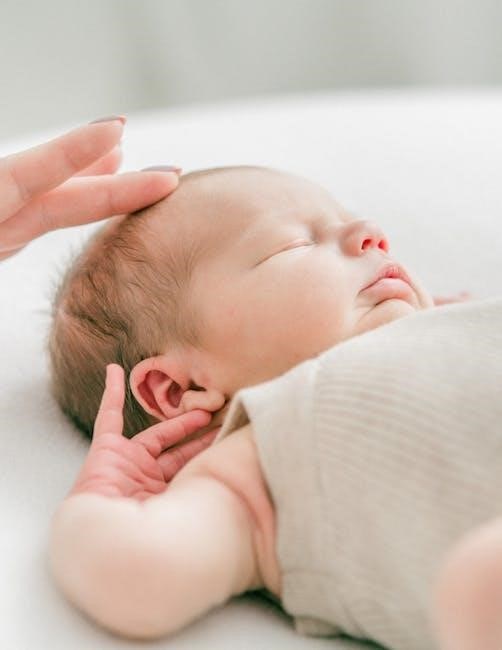
Room Temperature and TOG Chart
Understanding the correlation between room temperature and TOG ratings ensures optimal comfort and safety. A TOG chart helps parents choose the right sleep bag warmth for varying temperatures, preventing overheating or chilling.
5.1 Ideal Room Temperature for Baby Sleep
The ideal room temperature for baby sleep is between 68°F and 72°F (20°C to 22°C). This range ensures your baby stays comfortable without overheating. Overheating can increase the risk of SIDS, so maintaining a stable temperature is crucial. Aim for 70°F (21°C) as a safe midpoint. Consider factors like your baby’s clothing and sleep bag TOG rating when adjusting the room temperature. Always use a room thermometer and adjust layers accordingly to create a safe sleep environment.
5.2 Matching TOG Ratings to Room Temperature
Matching TOG ratings to room temperature ensures your baby’s comfort and safety. A 0.5 TOG is ideal for rooms above 24°C (75°F), while a 1.0 TOG suits temperatures between 20-24°C (68-75°F). For cooler spaces (16-20°C or 61-68°F), opt for a 2.0 TOG, and in colder rooms (below 16°C or 61°F), a 2.5 or 3.0 TOG is recommended. Always check your baby’s comfort and adjust layers accordingly. Using a room thermometer and a TOG chart can help you make precise choices for a safe sleep environment.
5.3 Using a TOG Chart for Guidance
A TOG chart serves as a valuable tool for parents to determine the appropriate sleep bag and clothing combinations based on room temperature. It typically outlines the recommended TOG ratings for different temperatures, helping to ensure baby’s comfort and safety. By referencing the chart, parents can avoid overheating or underheating, reducing the risk of SIDS. Regularly checking the chart, especially during seasonal changes, ensures consistent and adaptive sleep solutions for varying conditions.

Safety Considerations
Safety considerations are crucial when using baby sleep bags to prevent overheating and ensure a safe sleep environment. Understanding TOG ratings helps avoid risks associated with improper layering.
- Always choose sleep bags with breathable, natural fabrics to regulate body temperature effectively.
- Never add extra blankets or clothing beyond recommended layers to avoid overheating hazards.
- Ensure the sleep bag fits properly, allowing for easy movement without riding up.
Regularly monitor your baby’s comfort and adjust layers as needed to maintain a safe sleeping temperature.
6.1 Risks of Overheating and SIDS
Overheating is a significant risk factor for Sudden Infant Death Syndrome (SIDS). A baby sleep bag with a high TOG rating can trap excessive heat, especially in warm rooms. This can lead to discomfort, sweating, and increased heart rate, all of which are linked to SIDS. It’s crucial to avoid overlayering and ensure the sleep environment remains at a safe temperature. Using breathable fabrics and monitoring your baby’s cues can help prevent overheating and promote safer sleep. Always prioritize lightweight materials for warmer conditions.
6.2 Safe Sleep Practices with TOG Ratings
Using TOG-rated sleep bags is essential for maintaining a safe sleep environment. Always choose a sleep bag with a TOG rating suitable for your baby’s room temperature. Ensure the sleep bag fits properly, avoiding loose fabric that could pose a suffocation risk. Keep the sleep area clutter-free, avoiding soft toys or bedding. Regularly check your baby’s comfort, ensuring they are not overheating. For optimal safety, pair the sleep bag with lightweight, breathable base layers. Consistency and awareness are key to preventing risks like SIDS.
6.3 Monitoring Baby’s Comfort
Monitoring your baby’s comfort is essential to ensure they sleep safely and soundly. Check for signs of overheating, such as sweating, flushed skin, or rapid breathing, and signs of being too cold, like pale skin or shivering. Regularly observe your baby’s sleep patterns and adjust their sleep bag and layers as needed. Ensure their room temperature aligns with the recommended range for their TOG rating. Always prioritize breathable fabrics to maintain a stable body temperature.
Your baby’s comfort is key to peaceful sleep, so stay vigilant and make adjustments promptly if needed.
- Look for signs of distress or discomfort during sleep.
- Ensure the sleep bag fits properly and doesn’t restrict movement.
- Check for any visible signs of overheating or chilling.
By monitoring closely, you can create a safe and cozy environment for your baby to thrive.
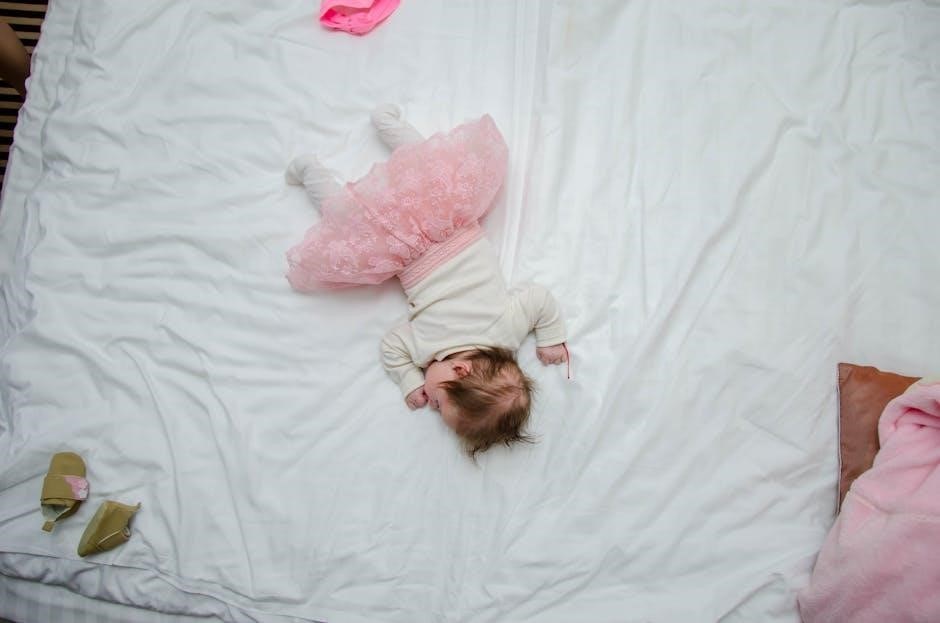
Common Mistakes to Avoid
- Ignoring room temperature when selecting TOG ratings can lead to overheating or discomfort.
- Using incorrect TOG ratings for the season may compromise safety and comfort.
- Overlayering clothing under sleep bags can increase the risk of overheating.
- Not monitoring baby’s comfort levels regularly can result in sleep disturbances.
Avoiding these mistakes ensures safer and more comfortable sleep for your baby. Always adjust based on individual needs and environmental factors.
7.1 Overdressing or Underdressing Baby
Overdressing or underdressing your baby can disrupt their sleep and safety. Too many layers may cause overheating, increasing the risk of SIDS, while too few can leave your baby chilly and restless. Always check the room temperature and use a TOG chart to guide your choices. Avoid bulky fabrics and opt for breathable materials. Monitor your baby’s cues, such as sweating or shivering, to adjust their clothing appropriately. Balance is key for a safe and comfortable sleep environment.
7.2 Ignoring Room Temperature Variations
Ignoring room temperature variations is a common mistake that can affect your baby’s comfort and safety. Rooms may be warmer or cooler at different times of the day or season, impacting the TOG rating needed. Always check the room temperature before dressing your baby. Failing to adjust the TOG can lead to overheating or chilling, both of which can disrupt sleep and pose safety risks. Use a thermometer and adjust layers accordingly to maintain a safe and cozy environment for your baby.
7.3 Not Adjusting for Baby’s Individual Needs
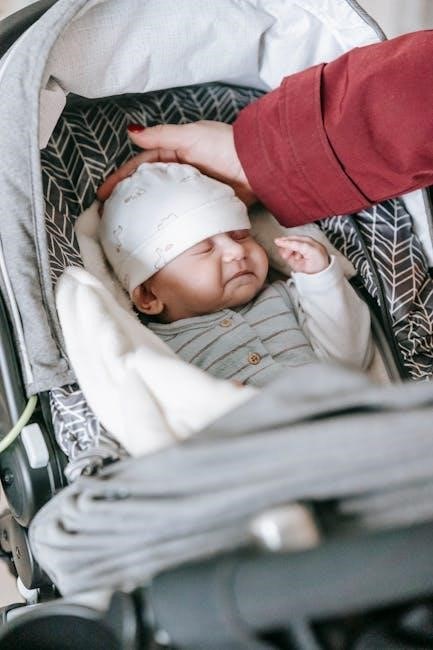
Every baby is unique, with different metabolic rates, body weights, and comfort levels. Failing to consider these individual differences can lead to discomfort or safety risks. For instance, a baby with a higher metabolism may overheat in a TOG rating suitable for another baby. Similarly, premature or smaller babies may need more warmth. Always monitor for signs of distress, such as sweating or shivering, and adjust layers accordingly. Tailoring your approach ensures a safer, cozier sleep environment.
Troubleshooting Baby’s Sleep
Troubleshooting baby’s sleep involves identifying discomfort signs, such as restlessness or sweating. Check the TOG rating and room temperature, then adjust layers or the sleep bag accordingly for comfort.
8.1 Signs Baby is Too Cold
If your baby is too cold, they may exhibit specific physical cues. Shivering, goosebumps, or cold hands and feet are common indicators. A baby who feels chilly might also be less active or lethargic. Additionally, their lips or skin may appear pale or blue-tinged. If you notice these signs, check the room temperature and ensure the sleep bag’s TOG rating is appropriate. Layering breathable clothing underneath can help, but always refer to a TOG chart for guidance. Monitoring your baby’s comfort and adjusting their clothing or sleep environment is crucial for safe sleep practices.
8.2 Signs Baby is Too Hot
Identifying if your baby is too hot is crucial for their comfort and safety. Look for sweating, especially on the back or chest, and flushed skin. A baby who is too hot may breathe rapidly or feel warm to the touch, even when not ill. Restlessness, tossing, or waking up frequently can also indicate overheating. Check for damp hair or a sweaty scalp, and ensure their sleep bag isn’t too heavy for the room temperature. Adjust layers promptly to prevent discomfort and potential overheat-related risks.
8.3 Adjusting TOG and Layers for Better Sleep
Adjusting TOG ratings and layering clothing can significantly improve your baby’s sleep quality. Start by observing your baby’s comfort: if they’re too hot, reduce the TOG or remove a layer. If they’re chilly, increase the TOG or add a lightweight base layer. Use breathable fabrics to prevent overheating and ensure the sleep bag fits properly. Seasonal TOG charts can help guide adjustments, but always prioritize your baby’s individual needs and room temperature for optimal comfort and safety.
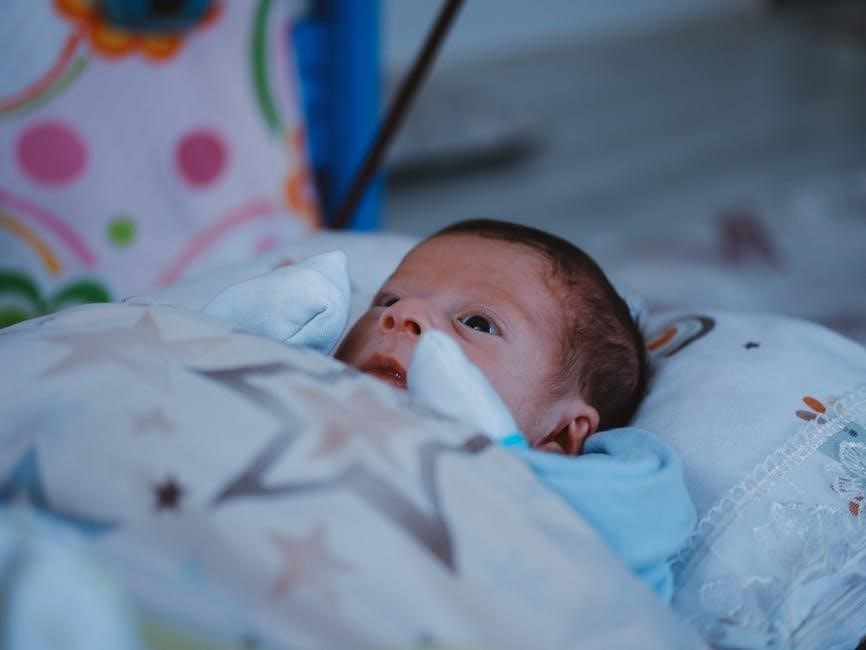
Choosing the Right Sleep Bag
Choosing the right sleep bag involves considering TOG ratings, materials, and size to ensure comfort and safety. Opt for breathable fabrics and proper fit to prevent overheating or chilling.
9.1 Understanding Different TOG Options
Baby sleep bags come in various TOG ratings, typically ranging from 0.5 to 3.0. A 0.5 TOG is lightweight, suitable for warm rooms (above 21°C), while 1.0 TOG is ideal for spring and autumn. A 2.0 TOG is perfect for colder months, and 3.0 TOG is for extremely cold environments. Each TOG level provides different warmth, ensuring your baby stays comfortable without overheating. Choosing the right TOG depends on room temperature and your baby’s clothing layers. Always check the manufacturer’s guidelines for specific TOG recommendations.
9.2 Materials and Their Impact on Warmth
Materials greatly influence a sleep bag’s warmth and breathability. Natural fibers like cotton and bamboo are soft, breathable, and ideal for regulating body temperature. Fleece and merino wool provide superior warmth for colder months. Synthetic fabrics, while durable, may trap heat and reduce breathability. The right material ensures the TOG rating functions effectively, preventing overheating. Choose fabrics that align with your baby’s needs and the season for optimal comfort and safety.
9.3 Size and Fit of Sleep Bags
Ensuring the correct size and fit of a sleep bag is crucial for your baby’s comfort and safety. A well-fitting sleep bag allows for proper mobility while preventing the baby from slipping down into the bag. Choose a size based on your baby’s weight and length, and avoid oversized bags. Opt for sleep bags with adjustable features, such as zippers or snap fasteners, to customize the fit. Always check the material’s stretchiness to ensure it accommodates your baby’s natural movements. A snug yet comfortable fit promotes better sleep and reduces safety risks.
Special Considerations
- For babies in humid climates, lightweight, breathable sleep bags with lower TOG ratings are essential to prevent overheating and moisture buildup.
- Babies who are active sleepers may require lower TOG ratings to avoid excessive heat generation during movement.
- Consider babies with sensitive skin; opt for hypoallergenic materials to ensure comfort and prevent irritation.
10.1 Premature or Low-Birth-Weight Babies
Premature or low-birth-weight babies may require special attention when using sleep bags. Their ability to regulate body temperature is less developed, so lighter TOG ratings (0.5-1.0 TOG) are often recommended. Parents should consult a pediatrician to determine the safest options, as these babies are more sensitive to temperature extremes. Opting for sleep bags made from breathable, lightweight fabrics can help maintain comfort without risking overheating. Monitoring their comfort and adjusting layers accordingly is crucial for their safety and well-being.
10.2 Babies with Medical Conditions
Babies with medical conditions may require special attention when choosing sleep bag TOG ratings. Conditions like heart defects or neurological disorders can affect temperature regulation. Always consult a healthcare provider to determine the appropriate TOG for your baby, considering their specific needs and medications. Monitor their comfort closely, as sensitivity to temperature may vary. Opt for breathable, hypoallergenic fabrics to reduce irritation and prevent overheating. Adjust layers gradually to ensure their safety and comfort.
10.3 Traveling with Different Climate Zones
When traveling across different climate zones, it’s essential to adjust your baby’s sleep bag TOG rating accordingly. Research the destination’s average temperature to choose the appropriate TOG. Pack sleep bags with varying TOG ratings to accommodate temperature fluctuations. Consider layering lightweight clothing under the sleep bag for added flexibility. A portable TOG chart can serve as a handy reference. Always prioritize breathable fabrics to ensure comfort and safety during travel.
11.1 Recap of Key Points
This guide emphasizes understanding TOG ratings for baby sleep bags, ensuring safety and comfort. It highlights seasonal adjustments, proper layering, and room temperature monitoring. The importance of breathable fabrics and avoiding overheating is stressed to reduce SIDS risks. By using a TOG chart and observing baby’s cues, parents can create a safe sleep environment. Remember, every baby is unique, so adapting strategies to individual needs is crucial for optimal rest and thermal regulation.
11.2 Final Tips for Safe and Comfortable Sleep
For a safe and cozy sleep environment, always monitor room temperature with a thermometer. Dress your baby in layers, starting with a lightweight base layer, and adjust according to the season. Avoid over-bundling to prevent overheating. Choose breathable fabrics and ensure the sleep bag fits properly. Regularly check for signs of discomfort, like sweating or shivering. Stick to a consistent bedtime routine and maintain a safe sleep space free from hazards.
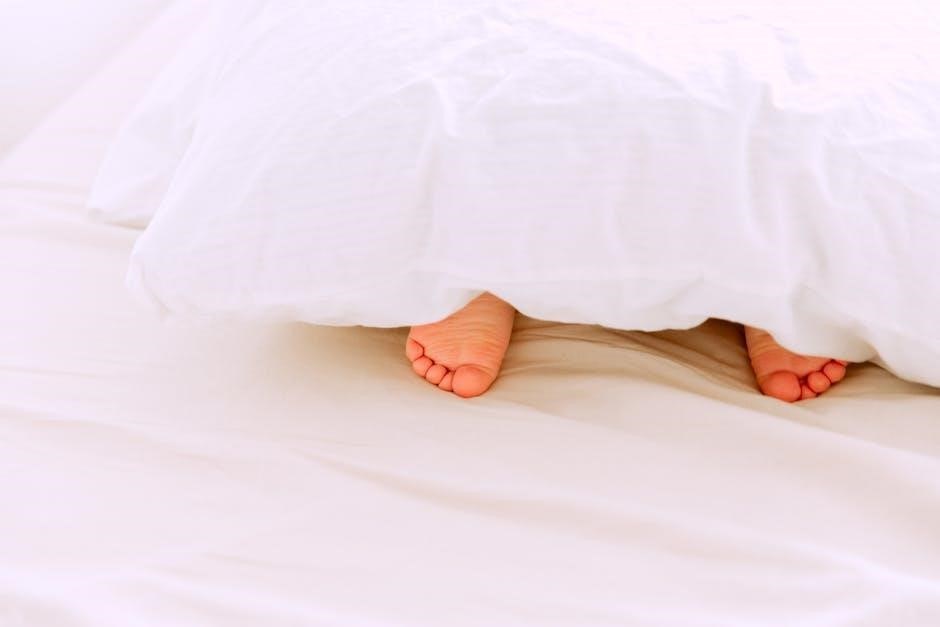
Additional Resources
For further reading, explore these resources to deepen your understanding of baby sleep safety and TOG ratings:
- Recommended books on infant sleep safety.
- Reputable websites offering detailed TOG guides.
- Downloadable charts and checklists for easy reference.
These tools will help you make informed decisions for your baby’s comfort and safety.
12.1 Recommended Reading
Recommended Reading
For a deeper understanding of baby sleep and TOG ratings, consider “The Sleep Guide for Babies” by Dr. Jane Smith, which offers practical advice on creating a safe sleep environment. Additionally, “Understanding TOG Ratings for Parents” provides a comprehensive overview of thermal regulation. Online resources like SafeSleep.org and BabyTogGuide.com are excellent for detailed charts and real-life scenarios. These resources ensure you make informed decisions for your baby’s comfort and safety.
12.2 Reliable Websites for TOG Guides
For accurate and trustworthy information on baby sleep bag TOG ratings, consider consulting reputable sources like the British Red Cross and The Lullaby Trust. These organizations provide evidence-based guides to help parents understand TOG ratings and ensure safe sleep practices. Additionally, websites like The Natural Sleep Company offer detailed TOG charts and product recommendations. Always cross-reference with this guide for a comprehensive understanding.
